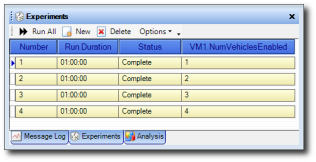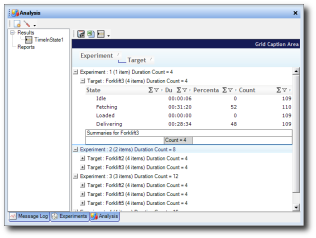
Design and Implement Better Material Handling Systems
Develop system operation and improve designs with simulation, then test controls offline with emulation
Design and develop new solutions virtually
Emulate3D produces a range of innovative engineering software designed to assist with the design, development, throughput analysis, and controls testing of material handling systems. These products are widely used within industry because they simplify the tasks they are designed to help with, and because they are cost effective in everyday use.
Test operation on your Dynamic Digital Twin
Users of Emulate3D Controls Testing save significant time and money at project commissioning by testing PLC operation before going on site, resulting in more robust systems that are fully tested before start up.
Commission and ramp with confidence
Connecting production-ready PLCs to accurate equipment models with product flows creates an accurate and reliable logic testing environment. On-site commissioning time is massively reduced and becomes predictable as the variable element of testing is taken off-line, and is now carried out in parallel with other tasks. Whole systems or single machines can be logically tested off-line, resulting in minimal disruption to existing production at commissioning. Operators can be comprehensively trained on implementing correct start-up and shut-down procedures for various incidents through the HMI, with no risk to them or production equipment.
Maintain control of costs and schedules
Eliminating the unpredictability of on-site testing from the project has a positive impact on costs and schedules, as well as on quality and ongoing maintenance.
Simulation is used to analyse product flows and throughputs for different layouts with various resource changes; these often include staffing levels, number of fork lift trucks, and different product mixes to understand the response of a proposed new or modified system. Throughput simulation models are data-driven, reading initial stock levels, operator schedules, and lists of orders from spreadsheets.
Whenever changes or new systems are required, a simulation study should always be a standard part of evaluating the alternatives. Take the guesswork out of new systems or modifications to existing ones – running a series of simulations enables you to become familiar with their behavior under different operating conditions before they exist.
Understand and demonstrate system operation with a Dynamic Digital Twin
A simulation model is the fastest way to put together a working model of a system proposal – drag and drop material handling equipment from standard catalogs, overlay routing information, and create loads at the system inputs to create realistic dynamic models. There’s no better way to create a focal point for all team members to put their ideas into action and progress development rapidly.
Demonstrate your solutions interactively with project stakeholders, produce unforgettable videos, and create outline Bills of Materials and traditional 2D CAD plots from the model for no additional effort.
Emulate3D is unique in developing a range of industrial software products that assist with the design, testing, and deployment of automated solutions by increasing quality, reliability and performance while reducing the risks and costs of implementation.
Learn more now
To find out more about how you can put Emulate3D technology to good use, register now for an Online Workshop. By getting a taster of how it all works you'll be well placed to decide which solution is right for your requirements.
Click here to access the registration page.
Emulate3D helps you to develop efficient, fully tested systems. Build and refine your virtual system with robust dynamic analysis, investigate alternatives, eliminate doubt, and test your controls with a Dynamic Digital Twin. Emulate3D reduces the risk of investing in a capital project.

Construct the model rapidly with QuickStart

Set up experiments to test the model.

Analyse the results, improve the model or modify variables, then run the model again to observe the effects of your changes.
